Visiting Volubilis Morocco – A spectacular Ancient Roman site
Exploring Volubilis, Morocco
I’ve heard about Volubils many times about these ancient Roman ruins on the northwestern frontier of the Roman Empire in Morocco and though nothing of it until I was in Fez and thought an organized tour of the area would be easy. I’m glad I did sign up for a day tour because Volubilis is not but spectacular and even though in ruins has some wonderful architecture, mosaics and vistas that make up for the remote drive. The city that once housed a population of over 20,000 people showed how impressive and important this city was to Roman times.
It’s impressive that Volubilis is also a Unesco World Heritage Site. I loved the fact that you can walk and discover all the ruins with no areas cordoned off to explore on your own.
You can have guides tour you through the ruins, but it was easy enough to visit all the main sites and stand in awe of all that remained with the visuals and signage that explained most of the city’s illustrious past, here are my tour highlights below:
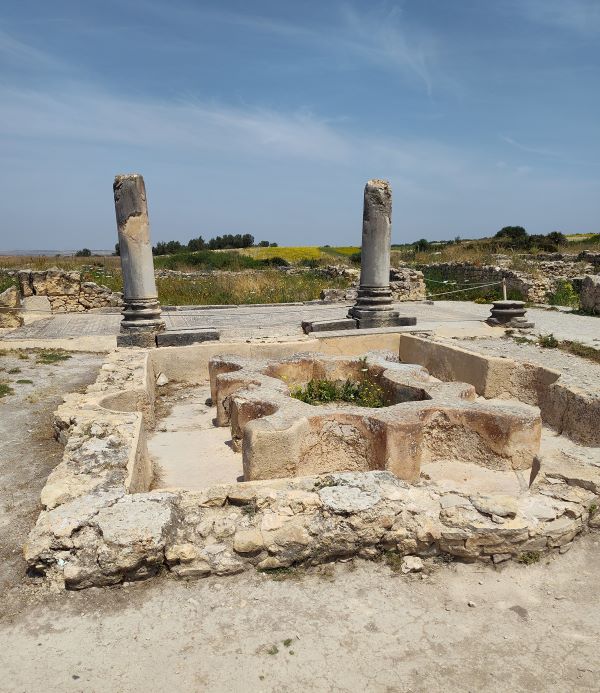
Where is Volubilis located in Morocco
Volubilis is located in northern Morocco, near the city of Meknes. It’s about 33 kilometers (20 miles) north of Meknes and close to the modern town of Moulay Idriss Zerhoun. The site sits on a fertile plain at the foot of the Zerhoun Mountains and offers wide views of the surrounding countryside.
This ancient Roman city is one of the best-preserved archaeological sites in Morocco and is recognized as a UNESCO World Heritage Site. It’s known for its impressive ruins, including mosaics, basilicas, and triumphal arches that hint at its former role as a key Roman outpost in North Africa.
When I visited late spring, it was wildflower season and added to the color of the landscape and the monuments for picture taking. It was an ideal timeframe to actually visit the site without the extreme heat in the area.
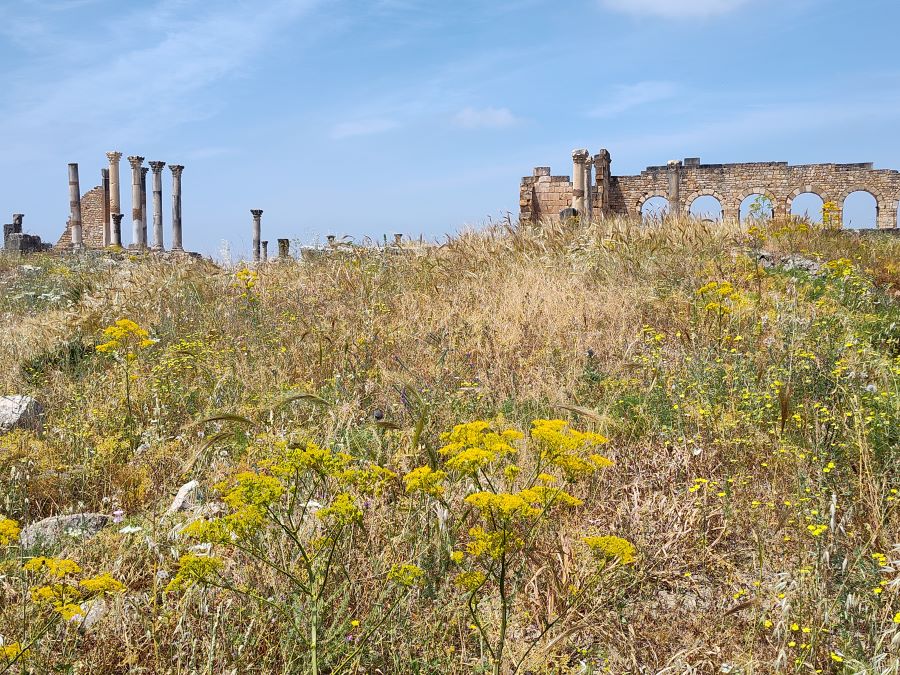
How to Get to Volubilis
1. From Fez
- By Car (Self-drive or Rental)
- Distance: ~1.5 to 2 hours (90 km)
- Route: Take the N4 to Meknes, then follow signs toward Moulay Idriss/Volubilis
- By Train + Taxi
- Take a train from Fez to Meknes (about 40 minutes)
- From Meknes, hire a grand taxi to Volubilis (~30 minutes)
2. From Meknes
- By Car
- Distance: ~30-40 minutes (33 km)
- Follow signs toward Moulay Idriss Zerhoun, then continue to Volubilis
- By Grand Taxi
- Shared or private taxis available near the main Meknes train station or downtown area
- Cost: Varies based on shared/private—ask in advance
- By Tour
- Local agencies offer half-day or full-day trips including Moulay Idriss and Volubilis
3. From Rabat
- By Car
- Distance: ~2 to 2.5 hours (150 km)
- Route: Highway to Meknes, then follow local roads
- By Train + Taxi
- Train from Rabat to Meknes (1.5 to 2 hours)
- Taxi to Volubilis
4. Tours and Day Trips
- Available from Fez, Meknes, and even Casablanca. I’ll share some recommendations of tours below
- Often include:
- Guided tour of Volubilis
- Visit to Moulay Idriss Zerhoun
- Sometimes combined with Meknes city highlights
A brief history about visiting Volubilis
Volubilis was once a thriving Roman city at the edge of the empire, built on fertile land in northern Morocco. Originally a Berber settlement, it became a Roman outpost around the 1st century AD and grew into a center of agriculture and trade, especially known for olive oil production. The city flourished for a few centuries, filled with grand villas, mosaics, temples, and public buildings that reflected Roman urban life in North Africa.
After the Romans left in the late 3rd century, the city continued under various rulers, including early Islamic dynasties. It was gradually abandoned as power shifted to nearby Fez and later Meknes. Many of its stones were reused in local buildings, especially during the construction of Meknes in the 17th century under Sultan Moulay Ismail.
Today, visitors can walk through the partially restored ruins—columns, arches, and elaborate floor mosaics still visible—getting a feel for daily life in a Roman provincial city. It’s a quiet, open-air experience that mixes history, archaeology, and scenic views. Volubilis is also a UNESCO World Heritage Site, recognized for its cultural and historical significance in the region.
Visiting Volubilis top attractions and highlights
Here are some tour highlights to visiting the ruins at Volubilis so you can get a lay of the land
1. Triumphal Arch (Arch of Caracalla)
The Triumphal Arch of Caracalla is one of the standout features of Volubilis and marks the southern end of the city’s main street. Built in 217 AD, it was dedicated to the Roman Emperor Caracalla and his mother, Julia Domna, as a tribute to their rule and a symbol of loyalty to the Roman Empire. Made of local stone and once topped with a bronze chariot, the arch is well-preserved and still bears Latin inscriptions honoring the emperor. Though time and weather have worn it down, the structure remains striking, with its rounded archway and decorative carvings offering a powerful sense of the grandeur that once defined the city. It’s also a favorite photo spot and acts as a dramatic entry or exit point when walking through the ruins.
- Built in 217 AD in honor of Emperor Caracalla and his mother
- One of the most iconic structures at the site
- Stands at the end of the main road (Decumanus Maximus)
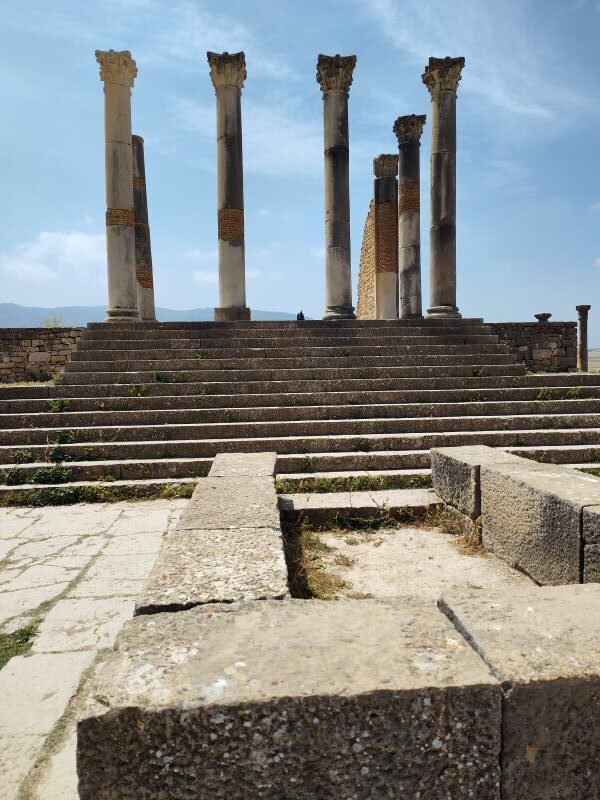
2. Capitol (Capitoline Temple)
The Capitol, or Capitoline Temple, was the religious heart of Volubilis, dedicated to the Roman gods Jupiter, Juno, and Minerva—the traditional trio worshipped in major Roman cities. Built around 218 AD, the temple once stood on a raised platform above the forum, with a grand staircase leading up to its entrance. Though only a few columns and parts of the foundation remain, you can still imagine its former scale and importance. From the elevated site, visitors get a broad view of the surrounding ruins and countryside, adding to its dramatic feel. The Capitol not only served as a place of worship but also symbolized Roman power and presence in this far corner of the empire.
- Dedicated to Jupiter, Juno, and Minerva
- Elevated ruins with partial columns still standing
- Great views over the surrounding countryside
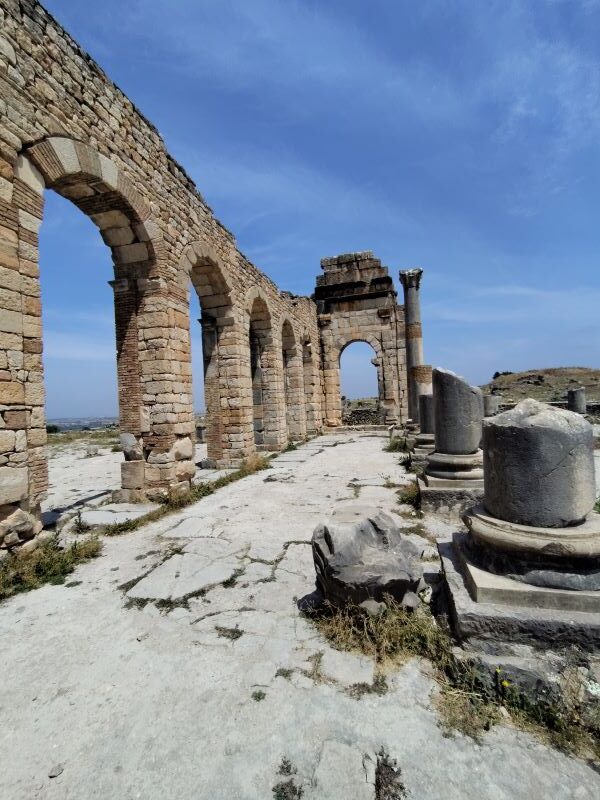
3. Basilica
The Basilica at Volubilis was the city’s main public building for legal and administrative matters, a space where justice was dispensed and civic business took place. Located next to the forum, it dates back to the early 3rd century AD and reflects typical Roman design, with a long rectangular layout, rows of columns, and a central hall. Much of its structure is still visible, including fragments of the stone columns and parts of the curved apse at one end, where judges would have sat. The open layout and tall remnants give a sense of the building’s original grandeur. Standing in the middle of it, you can imagine the bustle of Roman officials and townspeople handling the affairs of daily life in this once-prosperous city.
- Former public hall for legal and civic matters
- Impressive colonnades and large open space
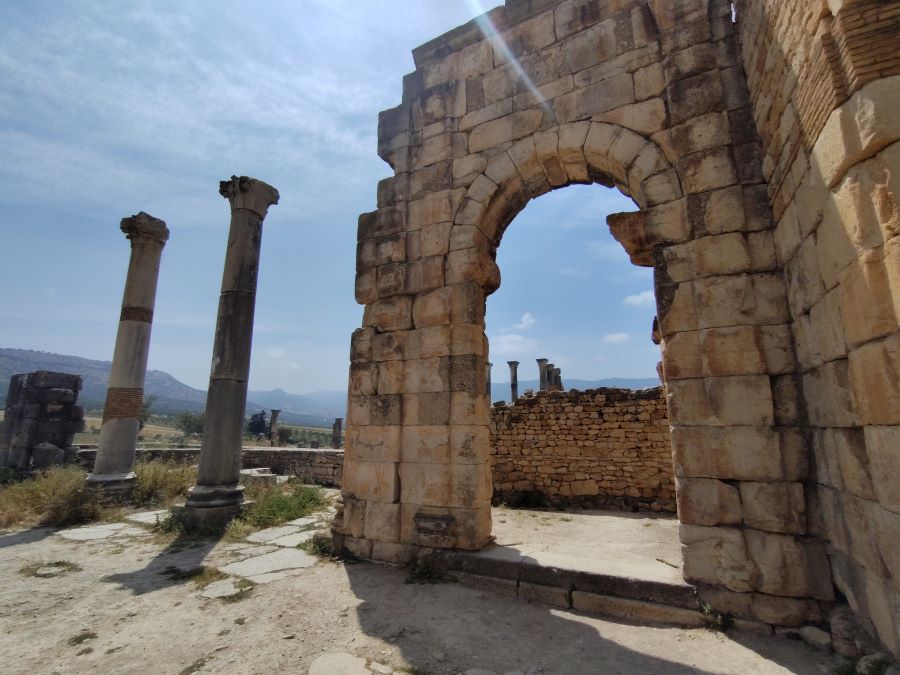
4. Forum
The Forum in Volubilis was the central public square and the focal point of civic life, where people gathered for political, social, and economic activities. Positioned near the Basilica and Capitol, it would have been surrounded by important buildings and open spaces used for markets, announcements, and gatherings. While much of the original layout is now in ruins, you can still see stone paving and traces of foundations that outline its original shape. It’s easy to imagine the square once bustling with merchants, citizens, and officials going about their daily routines. The Forum reflects how Roman towns were designed with community and governance at their core, even in a remote outpost like Volubilis.
- The central public square of the city
- Once surrounded by markets and administrative buildings
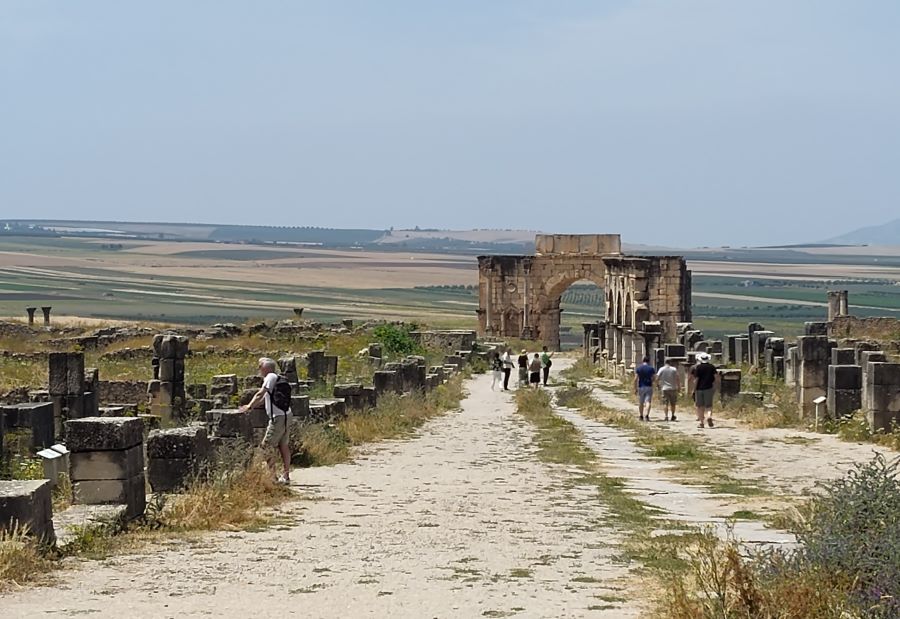
5. Decumanus Maximus (Main Street)
The Decumanus Maximus was the main street of Volubilis, running east to west through the heart of the city and linking key public buildings, homes, and shops. Paved with large stone slabs and lined with the remains of columns and archways, it served as a central artery for movement and trade. Walking along it today, you can still spot worn cart tracks and foundations of once-busy storefronts and residential entrances. This road would have been a hub of daily activity, with citizens moving between the forum, basilica, and various neighborhoods. Its layout reflects classic Roman urban planning, and it offers a clear, walkable route through the ruins that helps visitors piece together the city’s structure and flow.
- The main Roman road through the city
- Lined with columns, stone foundations, and ruins of shops and homes
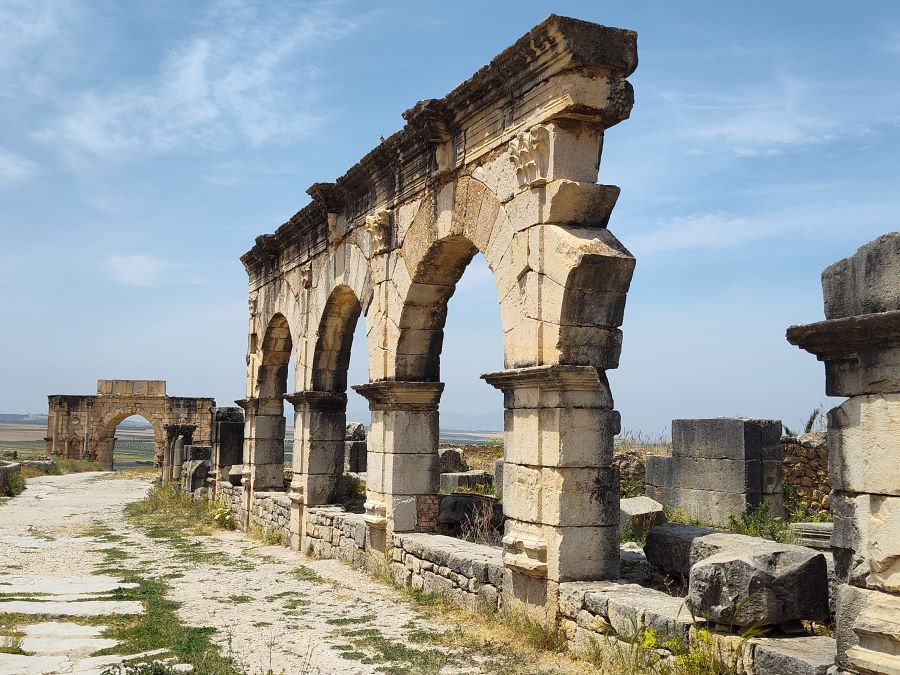
More visuals of the Decumanus Maximus (Main Street)
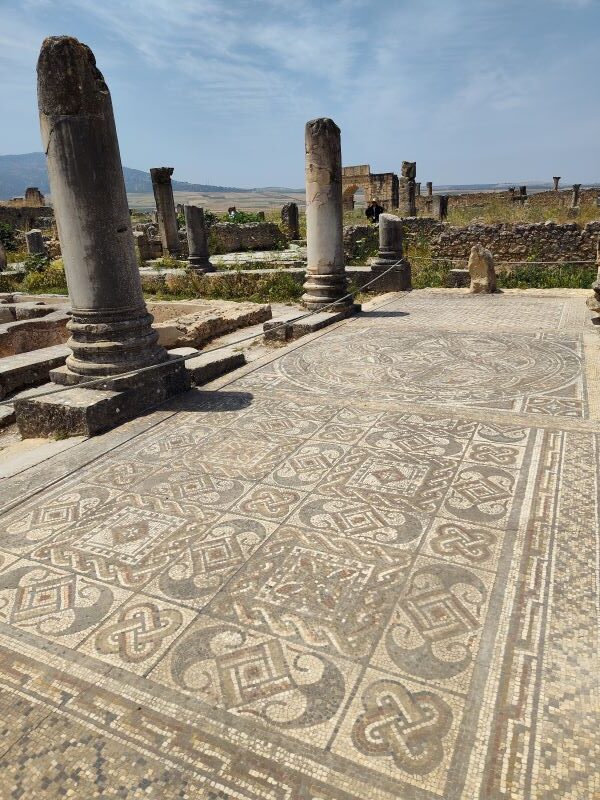
6. Mosaics in Roman Villas
The mosaics in the Roman villas of Volubilis are among the most impressive features of the site and give a vivid glimpse into the artistic tastes and daily life of the city’s wealthy residents. Many are still in their original locations, remarkably well preserved despite centuries of exposure. These intricate floor designs depict mythological scenes, animals, athletic contests, and daily activities. Some of the most notable include the Orpheus mosaic, showing the musician charming animals with his lyre, and the Labors of Hercules, which illustrates episodes from the hero’s famous tasks. Other villas feature mosaics of marine life, banquet scenes, or symbolic patterns. Each one reflects not just decoration but also a form of storytelling and status, offering insight into the Roman cultural world transplanted into North Africa.
- Remarkably preserved and detailed
- Notable villas include:
- House of Orpheus: Famous for the Orpheus mosaic
- House of the Athlete: Includes scenes of athletic games
- House of Venus: Contains various mythological mosaics
- House of the Labors of Hercules: Depicts Hercules’ legendary tasks
- Most mosaics are still in their original locations
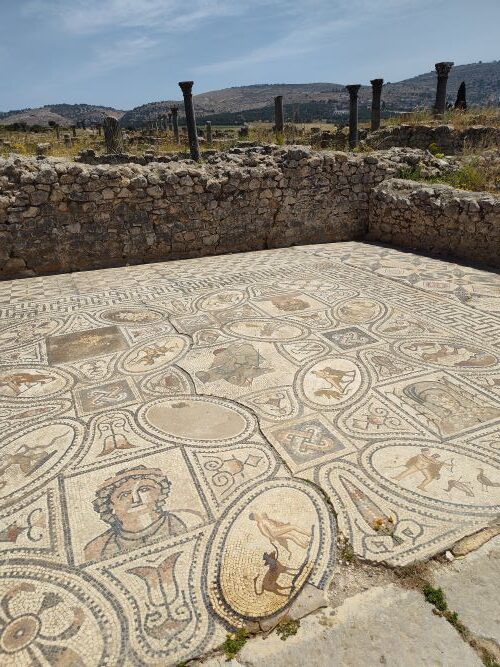
More visuals of Mosaics in Roman Villas
7. Olive Presses
- Remnants of ancient olive oil production
- Stone basins and pressing equipment still visible
8. City Walls and Gates
The city walls and gates of Volubilis were built to protect the settlement and control access, marking the boundaries between the bustling city inside and the countryside beyond. Though much of the original fortifications have crumbled over time, sections of the thick stone walls and a few gates still stand, giving a sense of the city’s scale and defensive strategy. These walls enclosed an area large enough to support a thriving community and helped safeguard it from potential threats. The gates, once heavily guarded, would have been busy points of entry and exit, controlling trade and movement. Today, walking along the remains of the walls offers a chance to appreciate how the Romans combined practicality with security to shape urban life in this remote provincial city.
- Partial remains of the ancient city’s perimeter
- Used for defense and trade control
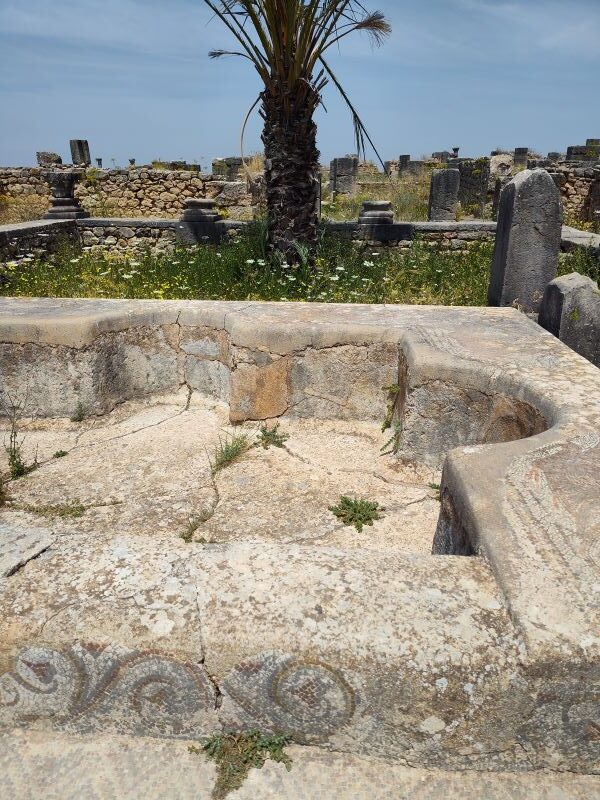
9. Residential Quarters
- Layouts of Roman homes with courtyards and private baths
- Gives a sense of domestic life during Roman times
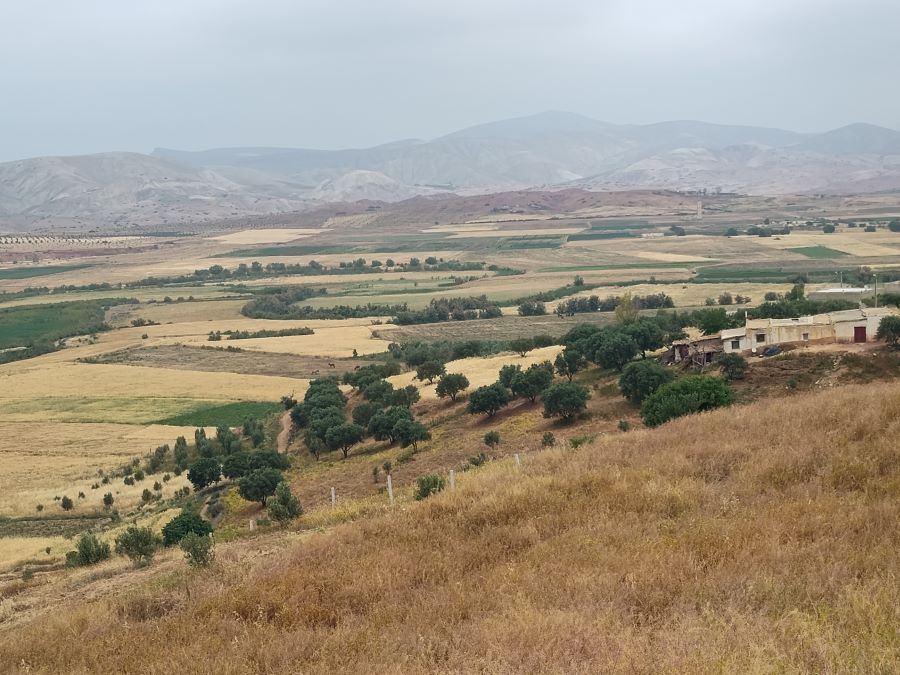
10. Panoramic Views
You’ll find the views here spectacular amid all the ruins, there are wide open spaces to view the countryside
- The site sits on a hill overlooking the Zerhoun plain
- Scenic countryside backdrop enhances the visit
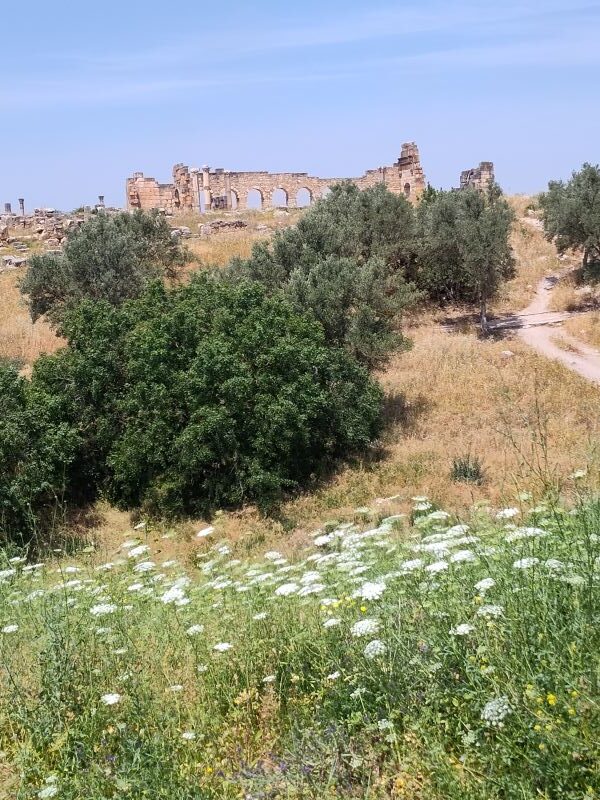
Tips to visiting the area
1. Timing
- Visit early morning or late afternoon to avoid the midday heat and crowds
- Weekdays tend to be less busy than weekends
2. What to Wear
- Comfortable walking shoes for uneven, rocky paths
- Lightweight, breathable clothing suitable for warm weather
- Hat and sunglasses for sun protection
3. What to Bring
- Water bottle to stay hydrated (there are limited facilities on site)
- Sunscreen to protect from strong sun exposure
- Camera or smartphone for photos (plenty of scenic spots)
4. Guided Tours
- Consider hiring a local guide or joining a tour to get detailed historical context
- Audio guides or guidebooks are also useful if you prefer exploring solo
5. Nearby Visits
- Combine your trip with a visit to the nearby town of Moulay Idriss Zerhoun, a charming pilgrimage site
- Meknes is just a short drive away and worth exploring for its own historical sites
6. Accessibility
- The site has uneven terrain and some steep sections—may be challenging for those with mobility issues
- Bring a walking stick if needed for stability
7. Facilities
- Limited food and drink options at or near the site, so bring snacks if needed
- Restrooms available near the entrance but limited inside
8. Respect the Site
- Avoid climbing on fragile ruins or mosaics to help preserve the site
- Follow signs and stay on designated paths
9. Entrance Fees
- There is a small entrance fee; check current prices ahead of time
- Tickets can usually be bought on site—cash is preferred
Details
-
General Admission: 70 Moroccan Dirhams (MAD) for adults; 30 MAD for children under 12.
-
Opening Hours:
-
Summer (approximately May–October): 8:00 AM – 7:30 PM
-
Winter (approximately November–April): 8:00 AM – 5:30 PM
-
-
Free Entry: Fridays for Moroccan citizens and residents
**subject to changes and updates to visiting the site
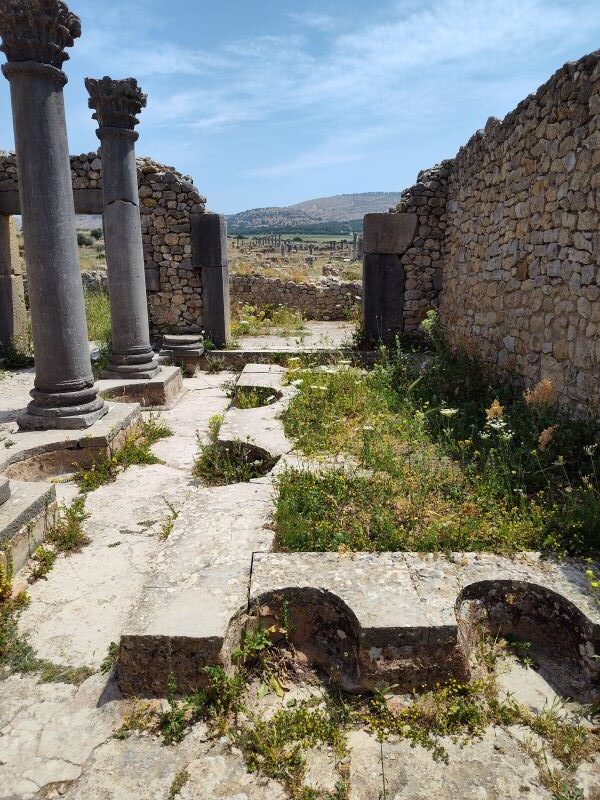
Take a guided tour of Volubilis and other attractions
From Fes: Volubilis, Moulay Idriss, & Meknes Full-Day Trip
Further Reading – Visiting Morocco
Here’s some other fabulous places to explore in Morocco
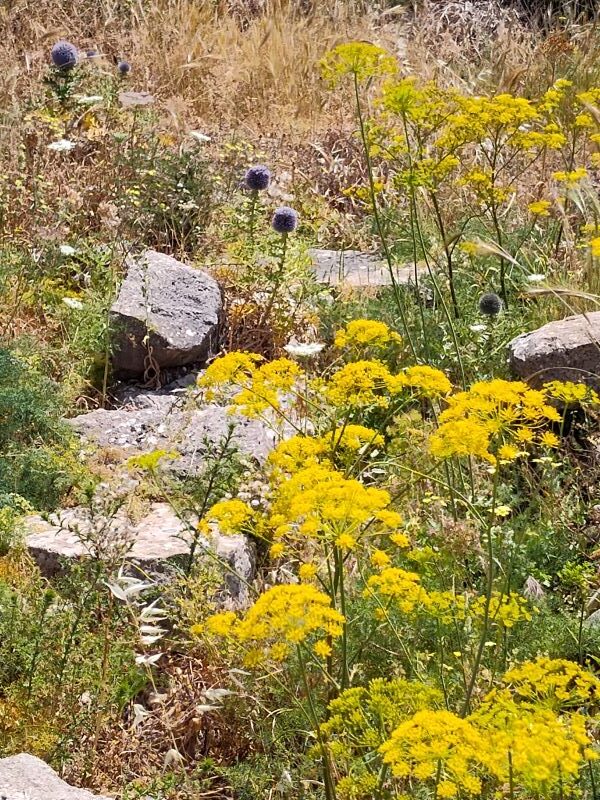
Conclusion to visiting Volubilis Morocco
Visiting Volubilis is a unique chance to step back into history and explore one of Morocco’s best-preserved Roman sites, where ancient ruins tell stories of a vibrant past against a stunning natural backdrop. Whether you’re drawn by archaeology, art, or simply the experience of wandering through a quiet, open-air museum, Volubilis offers something special for every traveler. To make the most of your visit, plan ahead—consider a guided tour, bring comfortable shoes, and set aside enough time to fully take in the mosaics, temples, and streets. Don’t miss the nearby town of Moulay Idriss for an added cultural touch. If you’re planning your trip to Morocco, make sure Volubilis is on your itinerary—it’s a memorable destination that connects you with a fascinating chapter of history.

About author – Noel Morata
After relocating from the United States to Andalusia in 2024, I’ve made it my mission to discover every corner of Spain along with many Mediterranean locations, cities and attractions. Based just east of Granada, I’ve spent a lot of time visiting Morocco including multiple extended visits to Marrakesh, Tangier, Chefchaoen and different parts of the country throughout different seasons. My background in history cultural studies and years of residence and exploring all of the Mediterranean countries have given me unique insight into the region’s historical significance, local customs, and culinary traditions.
I regularly update my guides with the latest information gathered through personal visits and relationships with local tourism officials, always seeking what’s new and exciting in each destination. As a self-proclaimed foodie, I’m passionate about discovering authentic local markets and regional specialties.
If you love antiquities and Unesco World Heritage sites, you should visit Volubilis here in Northern Morocco
Disclosure – some of the links above to various tours, transportation and hotels are affiliate links that benefits our site if you book here and we appreciate your support. The links are competitive, and you are not paying above what other affiliates provide.
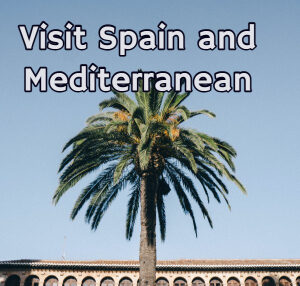
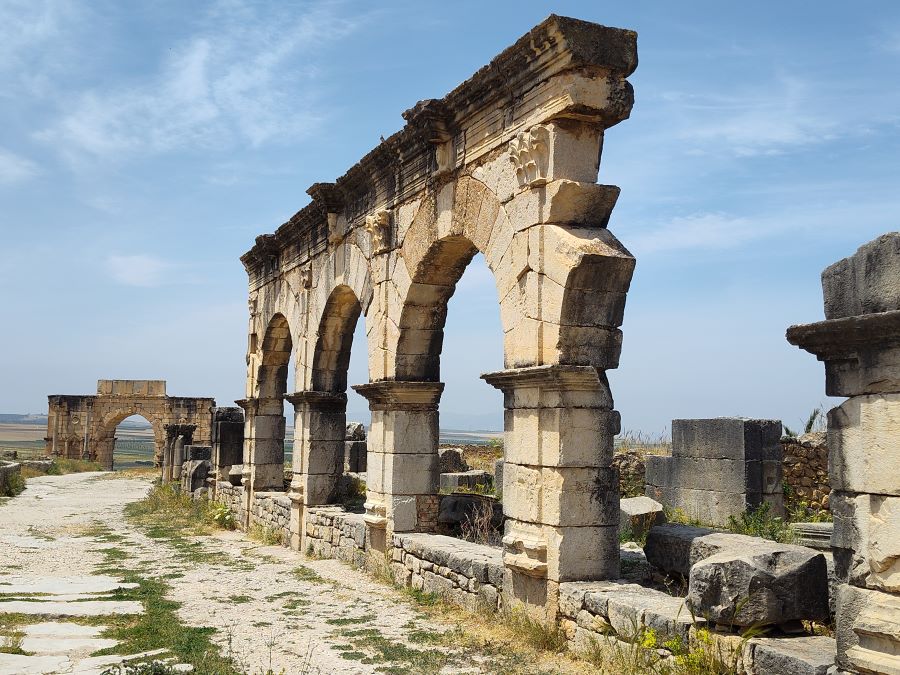
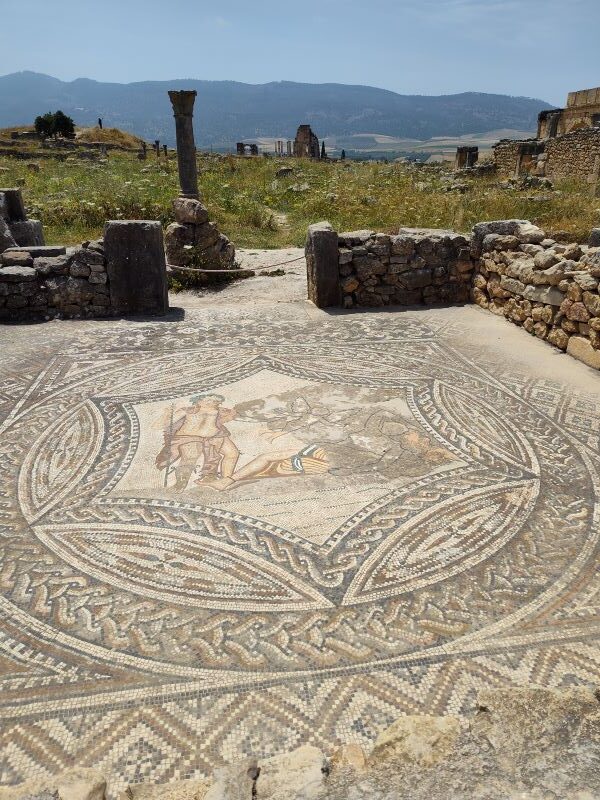
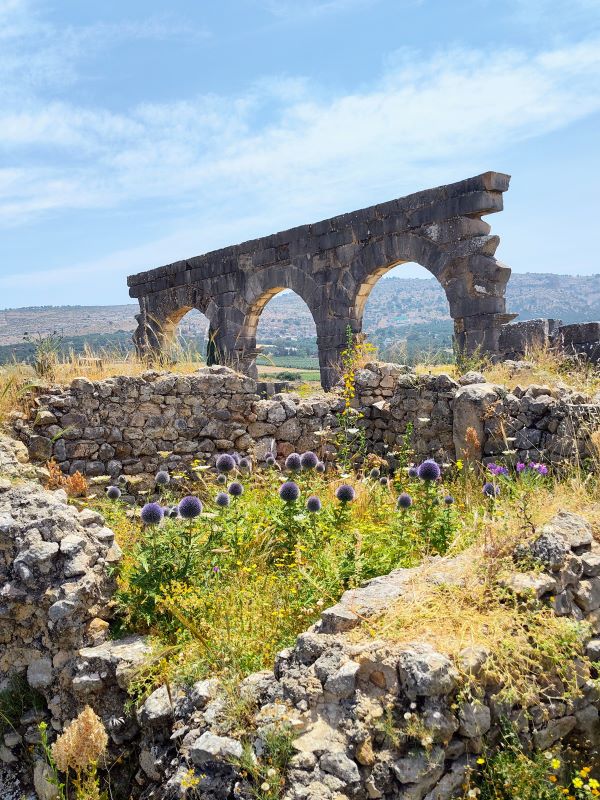
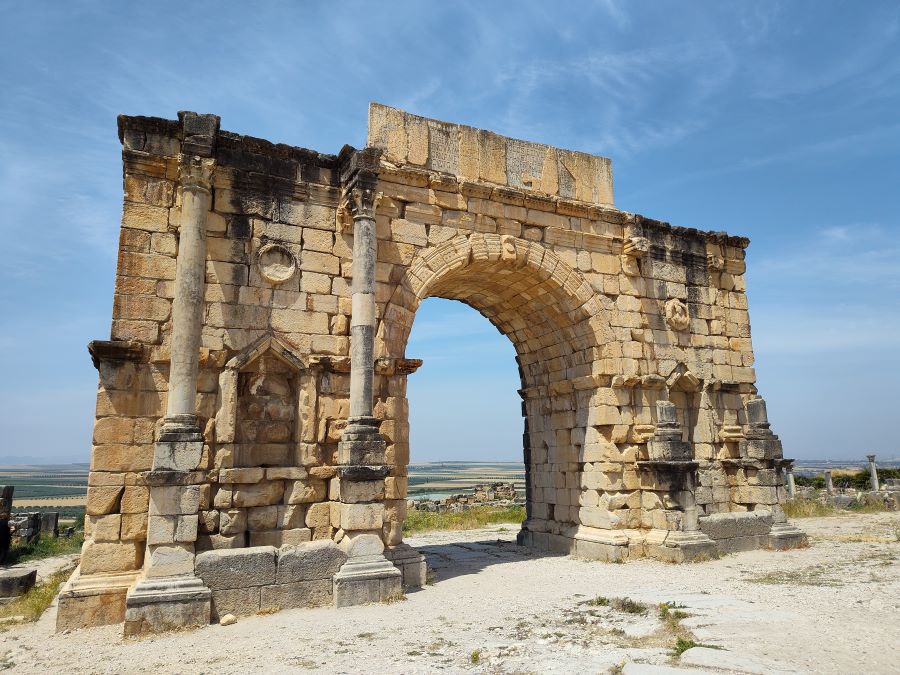
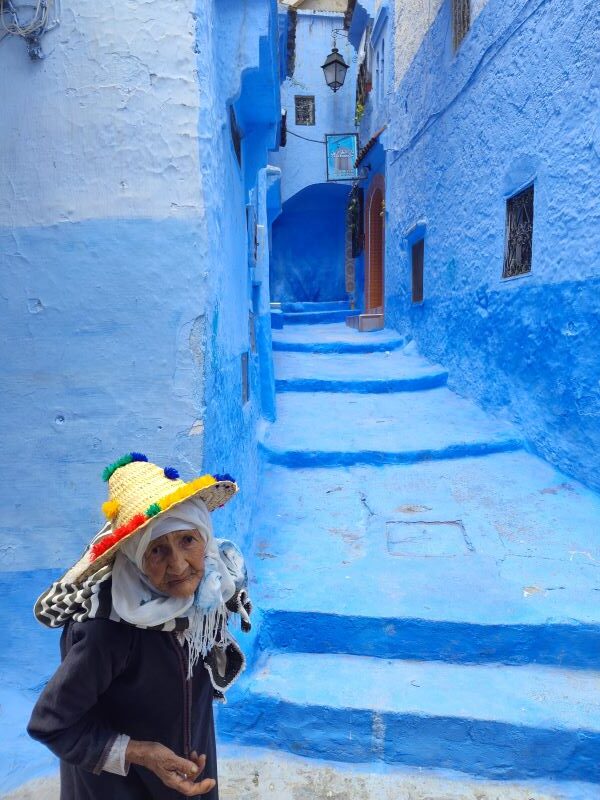
4 thoughts on “Volubilis Morocco”